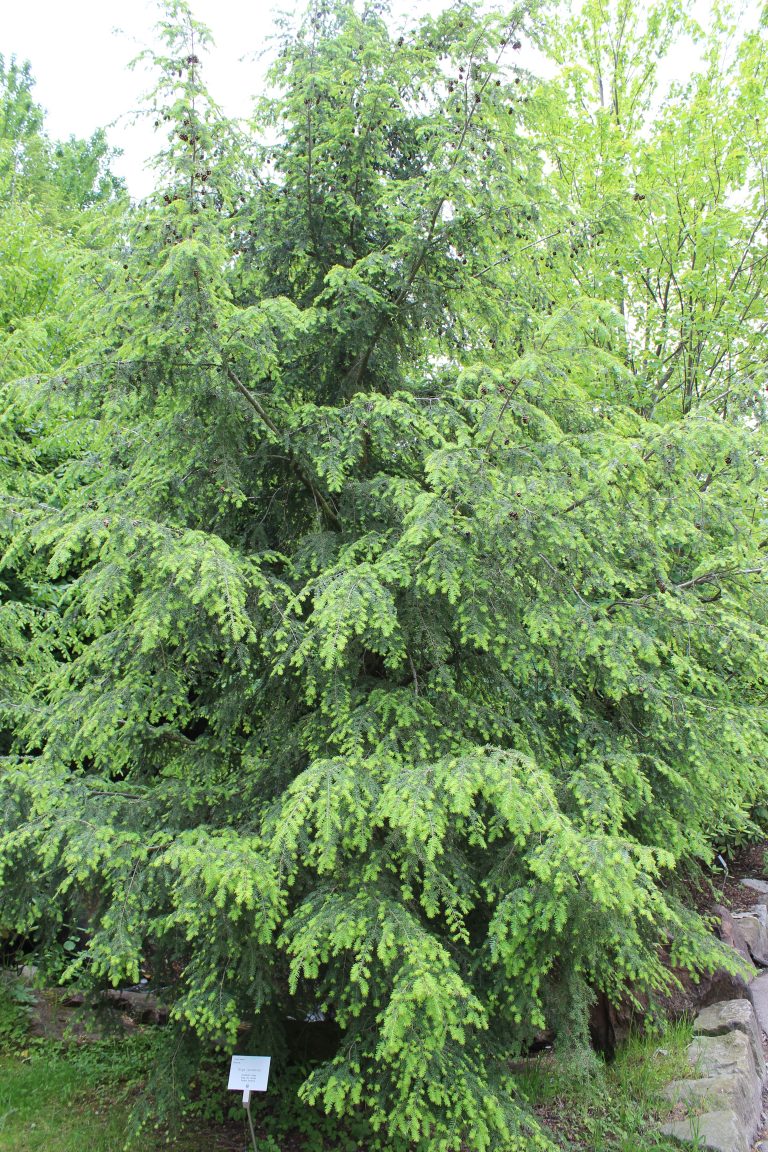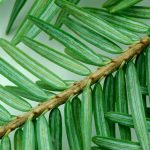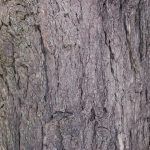Scientific name: Tsuga canadensis

Eastern hemlock

Eastern hemlock needles

Eastern hemlock bark
Identification
- Needles are flat, can be 0.2-1.0 inches long, and grow in two opposite rows on stalks
- Needle coloration: green on top with a pale underside
- Bark is brown and scaly with deep grooves
- Cones are small, only 0.5-0.75 inches long
- Cones become mature and produce seeds when they change in color from yellow-green to purple-brown
- Branches droop at the ends and give the tree a feather-like appearance
- Cone-shaped silhouette with drooping branches
- Eastern hemlock trees can be 160 feet tall with a trunk diameter of 6-7 feet
Status
- Native
Interesting Facts
- The oldest recorded Eastern hemlock was 988 years old
- A common pest of the Eastern hemlock is the hemlock wooly adelgid
- Native Americans once used the scrapings from the inner bark layer as a base for breads and soups
- Two known mycorrhiza form along Eastern hemlock root systems
- Eastern hemlock serves as a source of shelter for white-tailed deer during the winter months
- Seeds of Eastern hemlock also serve as a source of food for mice, voles, squirrels, and rodents
References
Godman, R.M., & Lancaster, K. (n.d.). Eastern Hemlock. Retrieved from https://www.na.fs.fed.us/spfo/pubs/silvics_manual/Volume_1/tsuga/canadensis.htm
National Park Service (n.d.). Eastern Hemlock. Retrieved from https://www.nps.gov/shen/learn/nature/eastern_hemlock.htm
Neson, G. (n.d.). Plant Guide - Eastern Hemlock. Retrieved from https://plants.usda.gov/plantguide/pdf/cs_tsca.pdf
Image Citations
Eastern hemlock: "Tsuga canadensis - Kanadische Tsuga" by Thesurvived99 is licensed under CC BY-SA 3.0
Eastern hemlock needles: "Eastern hemlock underside sdetwiler" by Sdetwiler is licensed under CC BY 3.0. Image cropped.
Eastern hemlock bark: "Canada Hemlock Tsuga canadensis Trunk" by Derek Ramsey is licensed under CC BY-SA 2.5, 2.0, 1.0. Image cropped.Cropped image licensed under CC BY-SA 4.0.